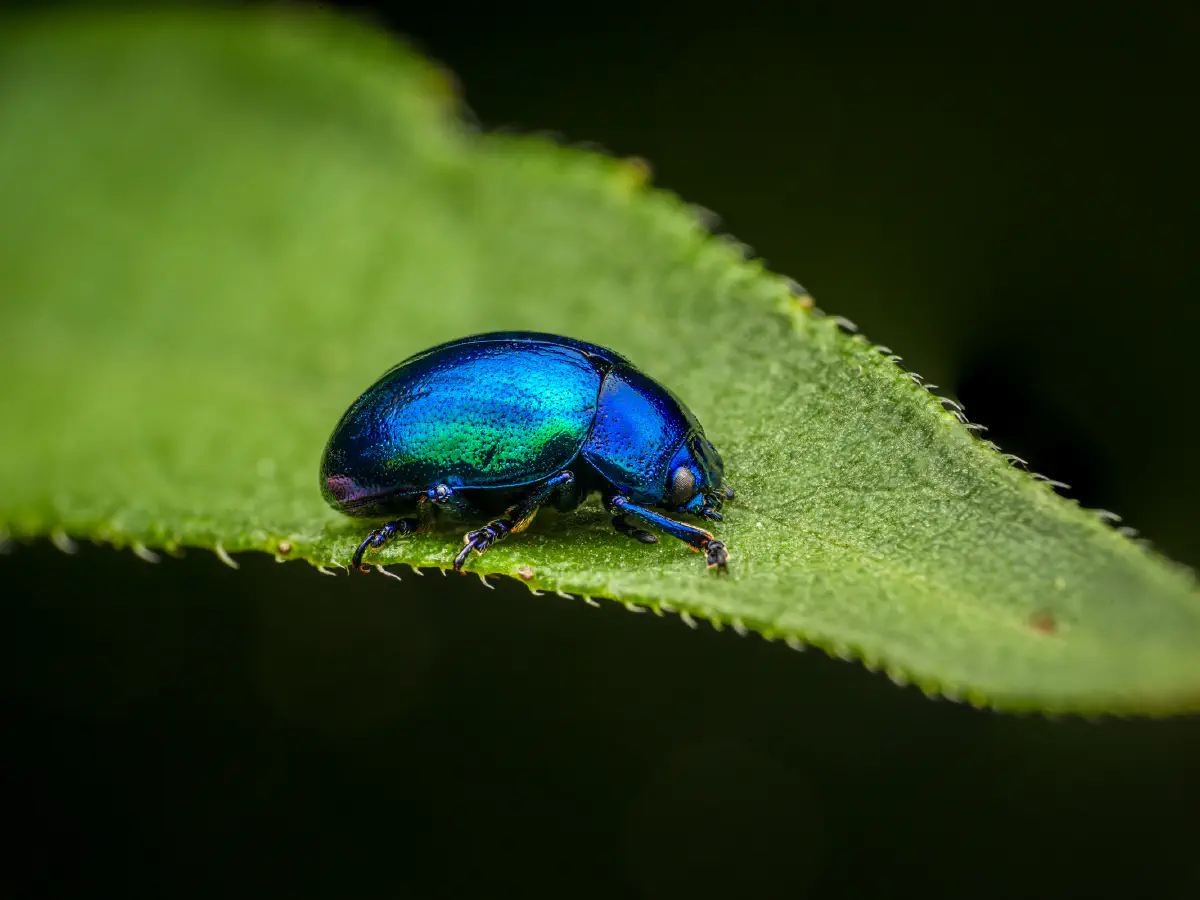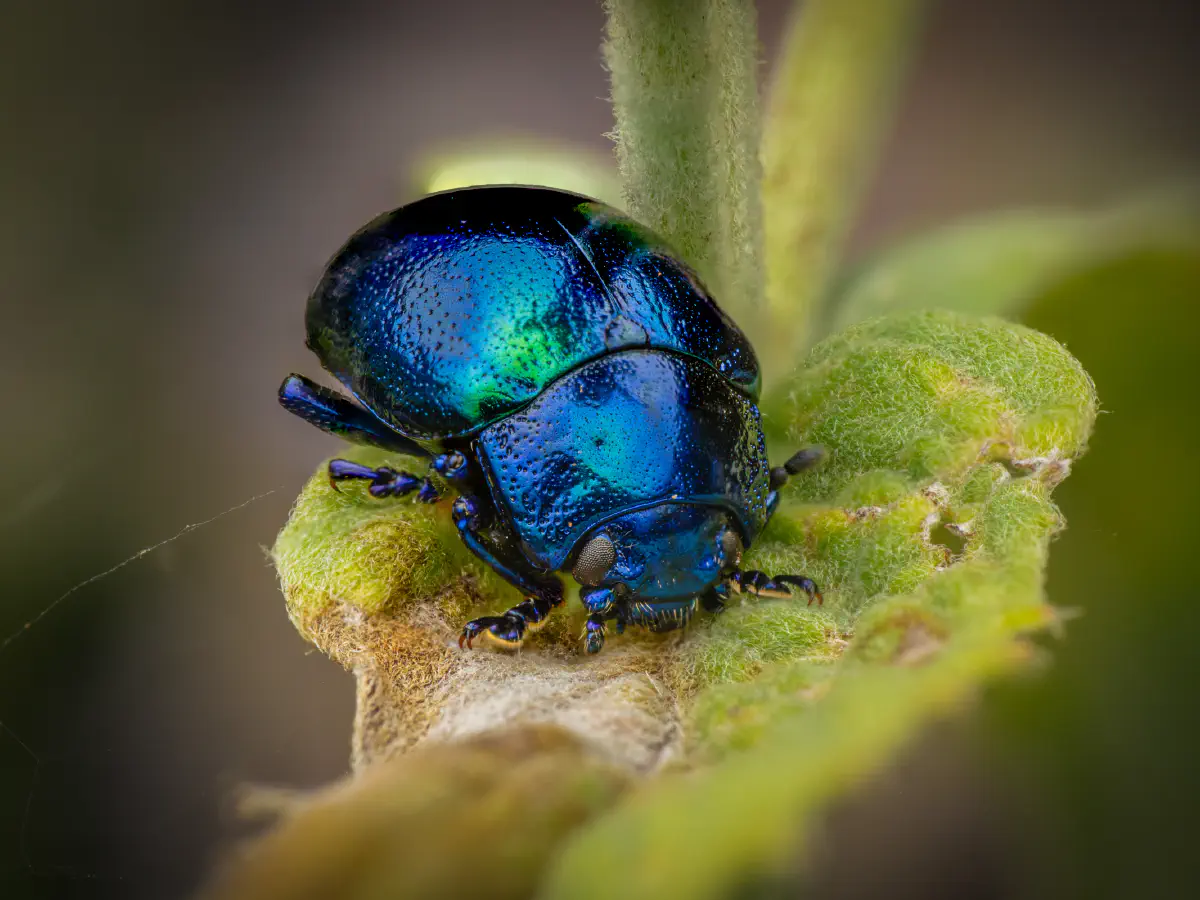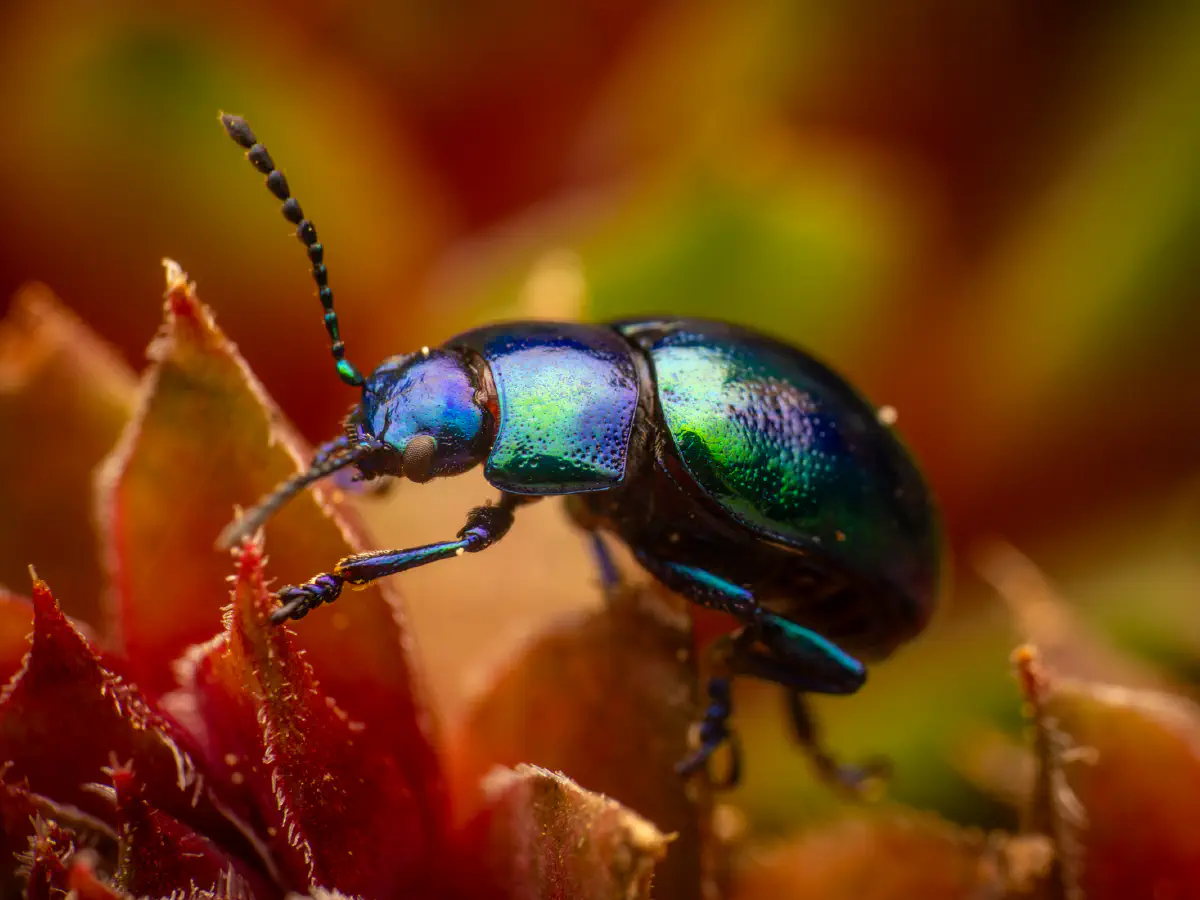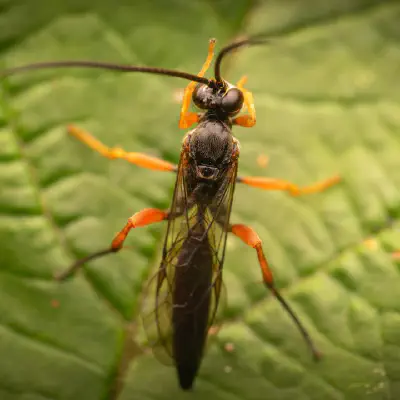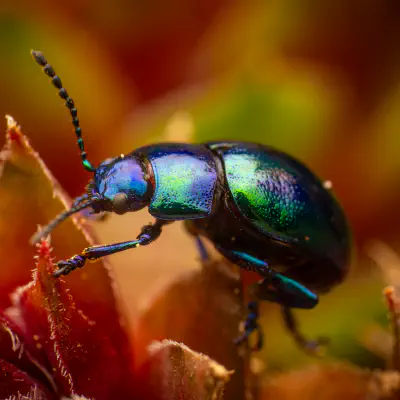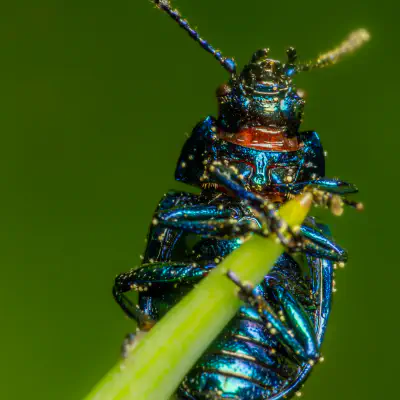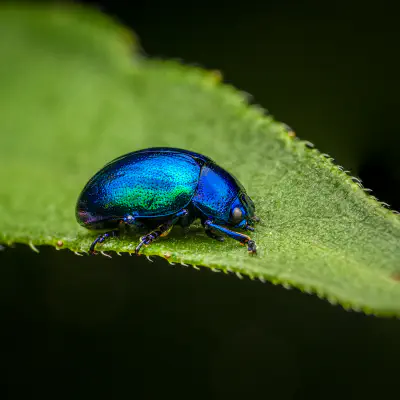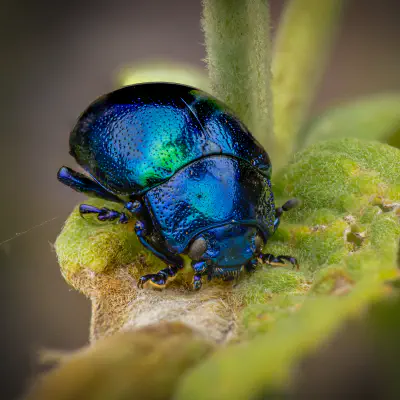The larvae of Chrysolina coerulans are soft-bodied, rounded in shape and black in colour. Th adult beetles are 6–10 mm (0.24–0.39 in) long, with black legs and antennae. It has a smooth head, without longitudinal groove, and parallel-sided thorax. The pronotal disk (which is found at the top of the first thoracic segment) of C. coerulans has fine punctures. It has a smooth elytra (hardened forewing), which is distinctly metallic blue, or iridescent blue. These beetles should not
be confused with the 'green mint beetle' (or Chrysolina herbacea), as it is greener in appearance (emerald green,) and slightly larger in size, as C. herbacea measures 7–11 mm in length. C. herbacea and Chrysolina graminis (tansy beetle) both have a mixture of fine and coarse punctures on the pronotal disk. Similar to other species of Chrysolina beetles, C. coerulans has cardiac glycosides (including xylose) in its defensive glands.

